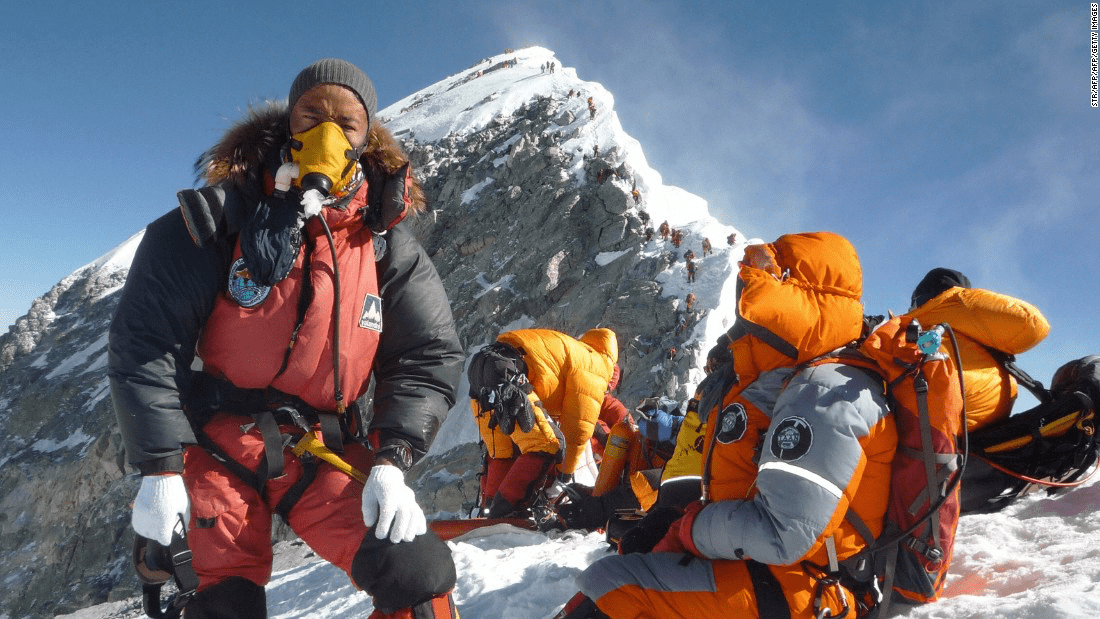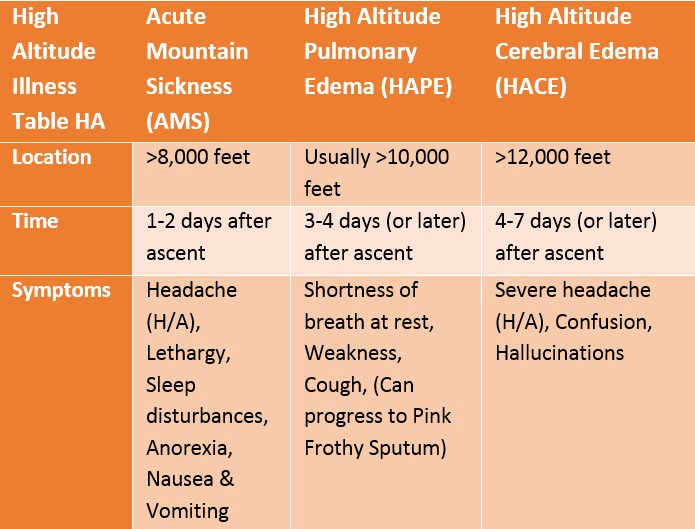
While there are many risks associated with being at altitude such as hypothermia or dehydration, High-Altitude Pulmonary Edema (HAPE) is the most deadly. Pulmonary Edema is fluid in the lungs and, as the name suggests, HAPE is fluid in the lungs due to prolonged time at high elevations. Typically, HAPE tends to occur in people that are above 8,000 ft, however, early signs and symptoms can manifest themselves as low as 5,000 ft.

Even though HAPE is extremely dangerous, it can easily be avoided if alpinists take the proper precautions. Acute Mountain Sickness (AMS), commonly referred to as altitude sickness, will usually present itself first in the form of a headache, weakness, nausea, or loss of appetite. When AMS occurs immediate action should be taken in the form of rest, hydration, and decreasing in elevation if necessary. If the symptoms of AMS go unchecked a patient can progress into HAPE, which then becomes a life-threatening situation.

In both AMS and HAPE the main physiological problem is that low atmospheric pressure leads to oxygen deprivation. While there is 1 atmosphere of pressure at sea level (or 29.92 inHg), at 18,000 ft there are only 0.5 atmospheres of pressure (14.96 inHg). As the pressure decreases with altitude the oxygen molecules get farther apart, therefore every breath of air you take contains less oxygen than if you were at sea level. As AMS progresses, the pulmonary vasculature begins to leak and secretes fluid into the alveoli. This secretion of fluid into the lungs is the main sign that AMS has worsened into HAPE.
Although HAPE is often deadly, with the right treatment it can be reversed. The most important action that should be taken is to descend quickly unless you are unable to. Oxygen should be administered to the patient as well as keeping them well hydrated. Trained medical professionals may give patients drugs to help combat HAPE, although these are typically not administered in the field. The general rule of thumb for combating any altitude illnesses is to go up in elevation slowly and descend quickly. Whether you are a fit outdoorsy person, or a couch potato, your body needs to acclimatize to elevations over 5,000 ft. If you ascend too quickly the low pressure and therefore lack of oxygen will quickly compromise your body’s main functions.
